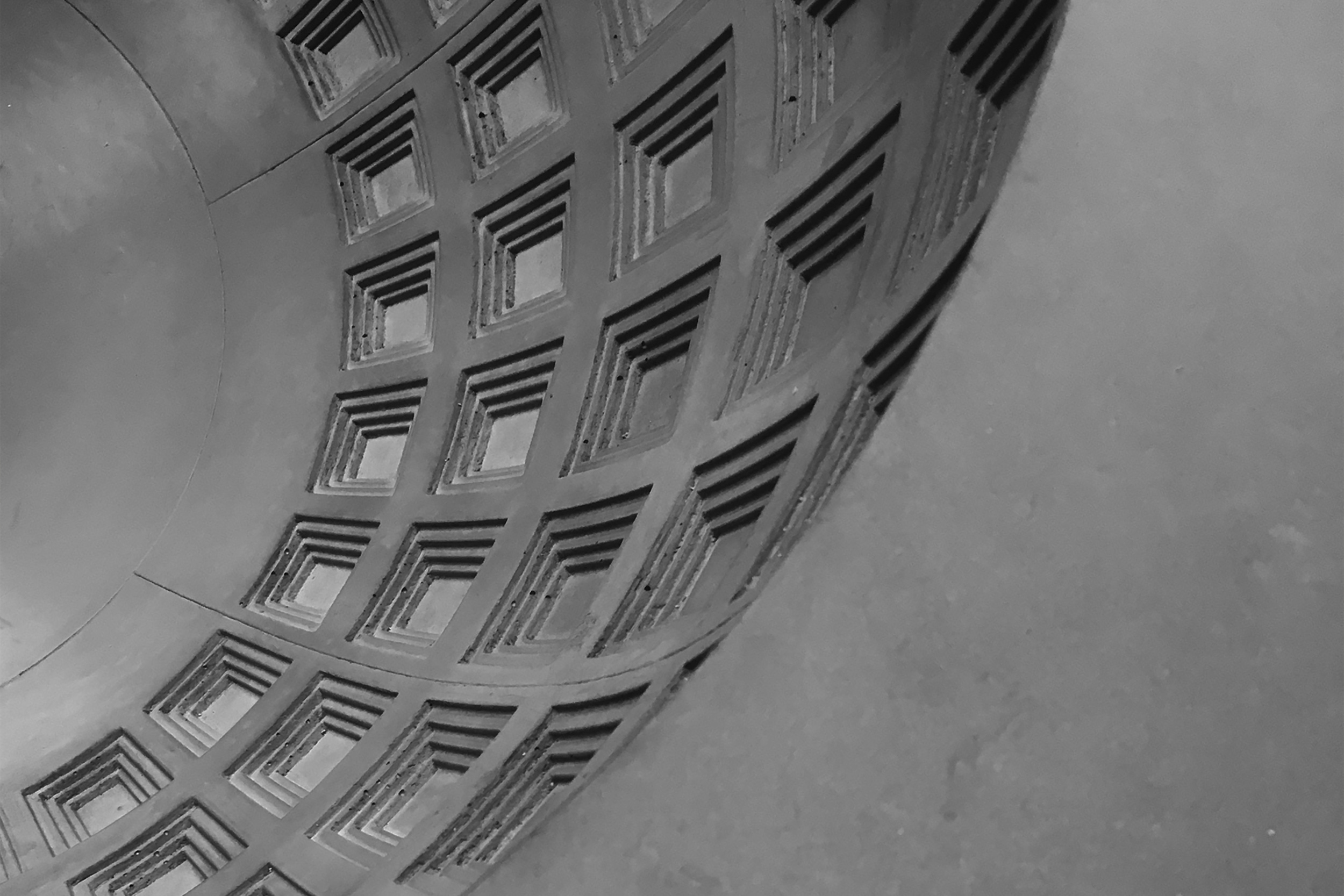Chicago Architecture Biennial
Chicago, USA
A collaboration betwen DRDH Architects and Graphic Relief. The exhibited pieces were the Pantheon dome, Pantheon floor plan and Nolli Map, The famous dome of the Pantheon is one of the earliest concrete structures and dates back to Roman times. To reflect its concrete origins the exhibition pieces were cast using fibreglass reinforced concrete. As one of the earliest examples of concrete,
The inverted dome of the Pantheon was cast from a silicone mould, recreating the detail of the coffers. At its centre is a mirror representing the oculus in the roof of the Pantheon.
The marble floor of the Pantheon was recreated with the veins of the multi-coloured marble recreated in shades of grey. The piece is cast in a single cast of concrete, with the tonal detail picked up from the mould.
Giambattista Nolli was an Italian architect, best known for his iconic plan of Rome, now universally known as the Nolli Map, engraved in 1748. The relief version of the map has a stainless ball at the location of the Pantheon.
Next project








